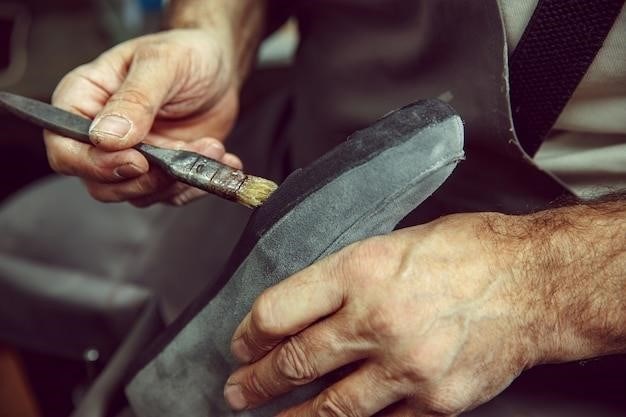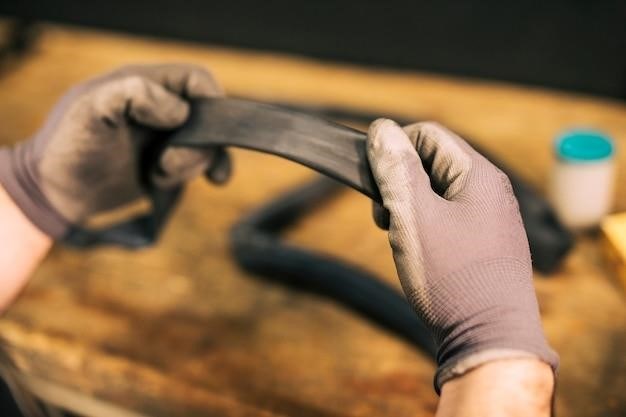Carbon Fiber Sanding⁚ A Comprehensive Guide
This guide provides a thorough walkthrough of sanding carbon fiber, covering essential tools, safety measures, preparation techniques, grit selection, and achieving various finishes. Learn to troubleshoot common problems and maintain a safe workspace while working with this advanced material.
Essential Tools and Safety Precautions
Before commencing any carbon fiber sanding, prioritize safety. Always wear a respirator to prevent inhaling fine carbon fiber dust, known to cause irritation. Protective eyewear shields your eyes from flying debris. Gloves are crucial to protect your skin from the abrasive material and potential irritants. Essential tools include various grits of sandpaper (starting with coarser grits and progressing to finer ones), sanding blocks for even pressure, a vacuum system to collect dust effectively, and potentially a wet sanding setup (water and containers). Proper ventilation is also vital in your workspace to minimize dust accumulation. Remember, safety is paramount when working with carbon fiber.
Preparing the Carbon Fiber Surface
Proper surface preparation is key for successful carbon fiber sanding. Begin by thoroughly cleaning the surface to remove any dirt, grease, or debris that could interfere with the sanding process. A degreaser or appropriate cleaning solvent is recommended for this step. Inspect the surface carefully for any existing damage, such as cracks or chips. If present, these should be repaired before sanding to prevent further damage during the process. Masking tape can protect areas that you do not wish to sand. For wet sanding, ensure you have a clean water source and containers for rinsing the sandpaper and workpiece. A clean and well-prepared surface ensures an even and consistent sanding process, leading to a superior finish.
Sanding Techniques⁚ Wet vs. Dry
The choice between wet and dry sanding depends on the desired finish and the material’s condition. Dry sanding is quicker for initial shaping or removing significant material, using progressively finer grits. However, dry sanding generates dust, potentially harmful to the lungs and the environment. Always use a respirator. Wet sanding, using lubricated sandpaper and water, is preferred for finer finishes, as it minimizes dust, reduces clogging, and provides a smoother surface. It’s gentler on the carbon fiber, preventing heat buildup and reducing the risk of scratching. For wet sanding, use a clean water source and change the water frequently. The technique involves consistent, light pressure and overlapping strokes. Both methods require careful attention to grit progression for optimal results; always move to finer grits after coarser ones.
Choosing the Right Grit⁚ A Step-by-Step Approach
Selecting the appropriate sandpaper grit is crucial for achieving a desired finish on carbon fiber. Begin with coarser grits (e.g., 120-220) to remove significant imperfections, tool marks, or excess material. Progress gradually to finer grits (e.g., 320-600) for smoothing and refining the surface. For a satin finish, stop around 400 grit. For a high-gloss polish, continue to even finer grits (e.g., 1000-2000) and potentially use polishing compounds. Always use a progressively finer grit after each step to avoid creating deeper scratches that would require more sanding. Each grit level addresses specific surface irregularities; starting with a grit too fine will be inefficient and time-consuming. Remember that wet sanding helps prevent clogging and provides a smoother finish than dry sanding at each stage. Consistent, even pressure and overlapping strokes are essential to prevent unevenness. The final grit choice depends on the intended finish and your preferences.

Achieving Different Finishes
This section details how to achieve various finishes on carbon fiber, from smooth satin to high-gloss polished and textured looks, using appropriate sanding techniques and polishing compounds.
Smooth Satin Finish
Achieving a smooth satin finish on carbon fiber requires careful sanding and attention to detail. Begin by thoroughly cleaning the surface to remove any dust or debris. Start with a coarser grit sandpaper, such as 200-grit, to remove any major imperfections or scratches. Gradually increase the grit to 400, then 600, and finally 800 grit. Always use wet sanding techniques with plenty of clean water to prevent clogging and overheating the sandpaper, and to help flush away sanding dust. Between each grit change, thoroughly rinse the surface and allow it to dry. The key is to use even pressure and maintain consistent, overlapping strokes. Avoid excessive pressure, which can damage the carbon fiber. Once you reach the desired smoothness with 800-grit, inspect the surface carefully under good lighting. A smooth satin finish should be free of visible scratches and have a uniform matte appearance. This low-sheen finish is durable, easy to maintain and enhances the carbon fiber’s natural texture.
High-Gloss Polished Finish
A high-gloss polished finish elevates the carbon fiber’s aesthetic appeal, showcasing its intricate weave. Begin with a smooth satin finish (as described previously), ensuring a flawless base. Progress to finer grits (1000, 1500, 2000) using wet sanding techniques. Each grit removes finer imperfections, building a mirror-like surface. Pay close attention to avoid sanding through the clear coat. After wet sanding, thoroughly rinse and dry the surface. Employ a high-quality automotive rubbing compound with a polishing pad. Apply the compound in small sections using a rotary or orbital polisher, working in gentle, overlapping motions. Remove excess compound with a clean microfiber cloth. Follow with a polishing glaze to enhance the shine, removing any remaining swirl marks. Finally, apply a high-quality carnauba wax to protect the finish and deepen the gloss. The result is a deep, reflective surface that radiates sophistication. Patience and precision are key to achieving this superior finish.
Textured Finishes
Beyond smooth finishes, textured effects add depth and visual interest to carbon fiber components. Achieving a textured look involves careful control during the sanding process. Instead of aiming for a perfectly smooth surface, strategically vary the sanding pressure and technique to create the desired texture. For a subtle texture, use a coarser grit sandpaper initially, then switch to finer grits for controlled refinement. Consider using sanding blocks with different textures or applying pressure unevenly. A slightly more aggressive approach with a coarser grit can produce a more pronounced, rugged texture. Experiment with different sanding patterns—circular, linear, or cross-hatched—to diversify the texture. Remember that once a texture is created, it is difficult to remove completely. Consider applying a clear coat to seal the texture and enhance its longevity. The final texture will depend on the initial grit used and the sanding technique, allowing for creative expression and unique finishes. Always test the techniques on scrap material before proceeding to the final piece.

Troubleshooting Common Issues
This section addresses imperfections, damage prevention, and maintaining a safe workspace during carbon fiber sanding, offering solutions for various challenges encountered during the process.
Dealing with Imperfections
Minor surface imperfections are common during carbon fiber sanding. Small scratches can often be removed by progressively increasing the sandpaper grit, starting with a coarser grit (e.g., 200 grit) and moving to finer grits (e.g., 400, 600, and higher). For deeper scratches or blemishes, consider using a wet sanding technique with progressively finer grits to minimize the risk of creating more damage. Remember to use a sanding block for even pressure distribution and to prevent uneven sanding. If the damage is significant, consider filling the imperfections with a suitable resin before sanding. Always wear appropriate safety gear, including a respirator and gloves. For larger areas, a machine sander may be more efficient, but requires extra caution to avoid excessive material removal. Patience and methodical sanding are key to achieving a smooth surface. If you encounter any issues, consult online resources or experts for guidance. Consistent, careful sanding will yield the best results.
Avoiding Damage to the Carbon Fiber
Protecting the carbon fiber during sanding is crucial. Use a sanding block to maintain even pressure and prevent localized sanding, which can lead to uneven surfaces and damage. Start with a lower grit sandpaper and gradually increase the grit to avoid aggressive removal of material. Wet sanding is recommended as it reduces friction and heat buildup, preventing damage to the fibers. Keep the sandpaper consistently wet during the process. Regularly rinse the sandpaper to remove debris. Pay attention to the sanding residue; if it turns black, you’re sanding through the clear coat or into the carbon fiber itself – stop immediately and use a finer grit. Avoid excessive pressure, which can cause fiber damage or create deeper scratches. Work in small, overlapping sections to ensure even sanding; Inspect the surface frequently to monitor progress and prevent over-sanding. Always wear appropriate personal protective equipment (PPE), including gloves and a respirator, to prevent inhalation of carbon fiber dust. Following these steps minimizes the risk of damaging the delicate carbon fiber material.
Maintaining a Safe Workspace
Working with carbon fiber requires a safe and well-ventilated environment. Always wear a respirator to prevent inhaling fine carbon fiber dust, which can cause respiratory irritation. Gloves are essential to protect your hands from splinters and skin irritation. Eye protection, such as safety glasses, is crucial to prevent eye injuries from flying debris. A well-lit workspace improves visibility and reduces the chance of errors. Use a vacuum system to collect sanding dust; do not simply let the dust settle. Regularly clean the workspace to prevent dust accumulation and minimize the risk of fire hazards from static electricity. Keep flammable materials away from the sanding area. If working with large carbon fiber components, ensure adequate space to maneuver comfortably and prevent accidents. Dispose of sanding residue properly according to local regulations. Remember, safety is paramount when working with this material. Establish a safe workspace to minimize risk and ensure a successful sanding process.


